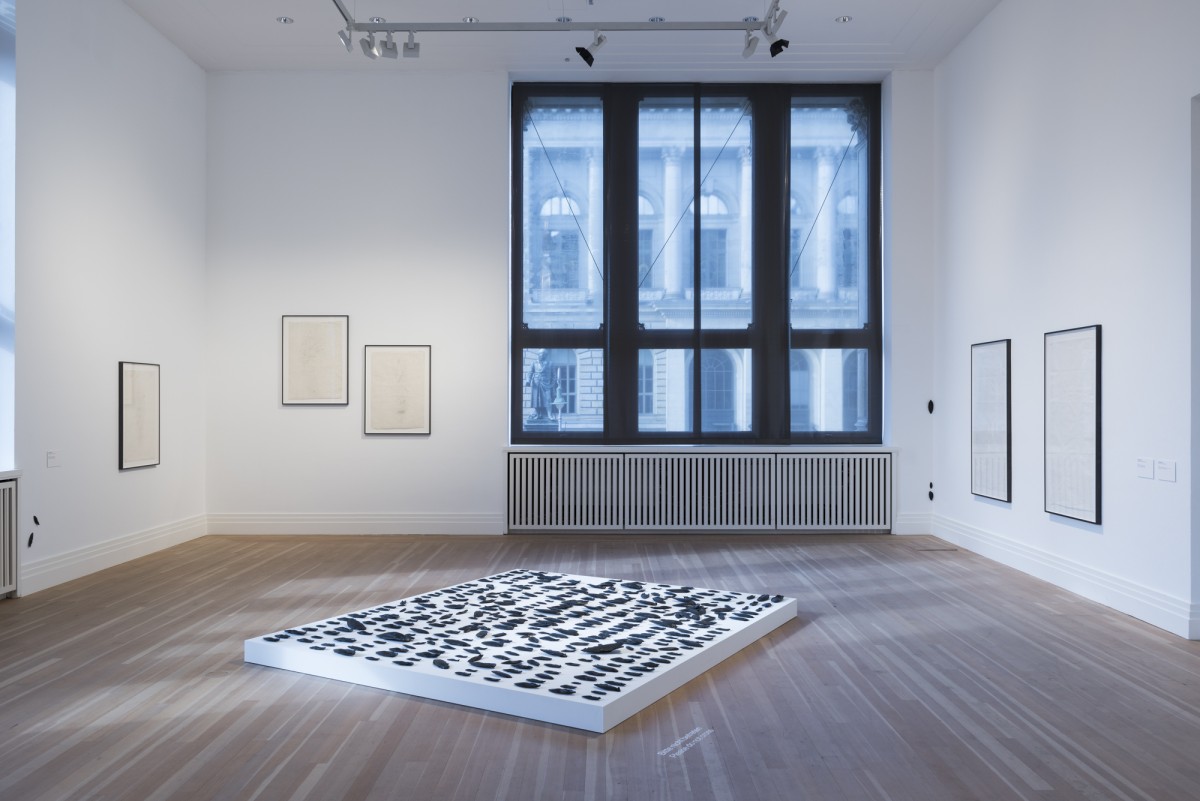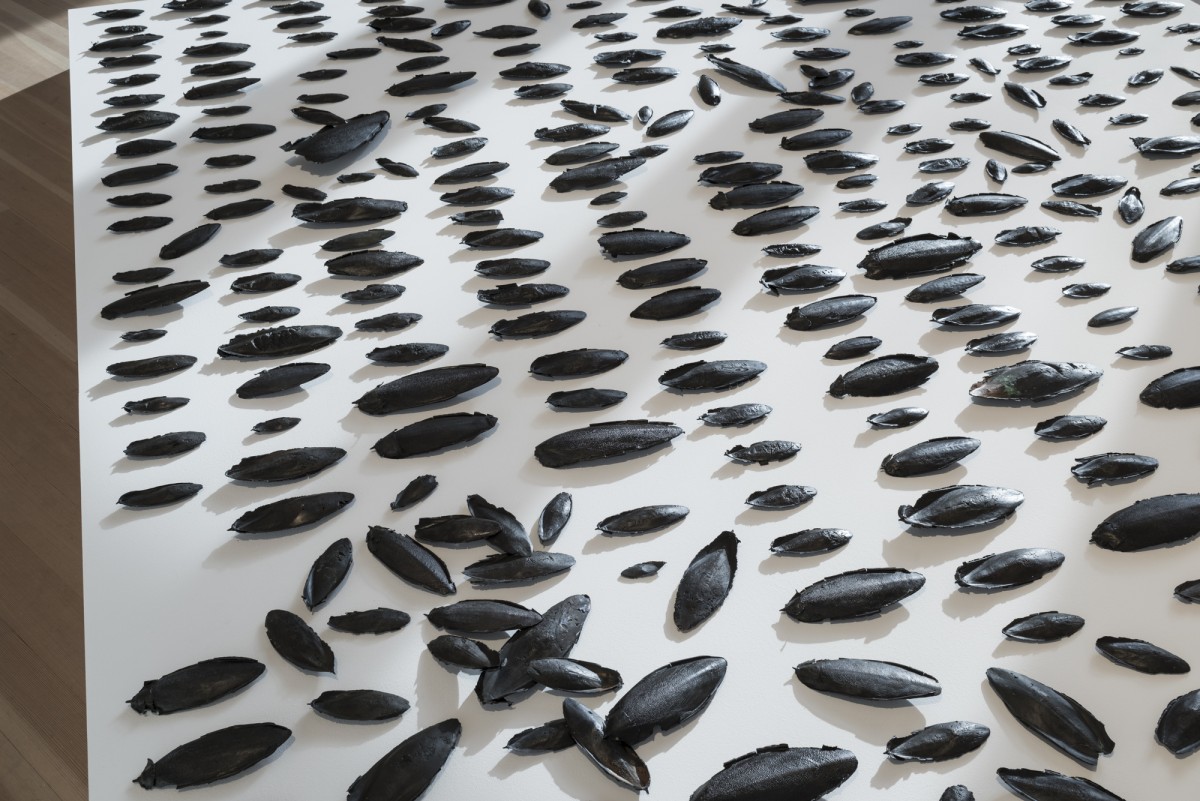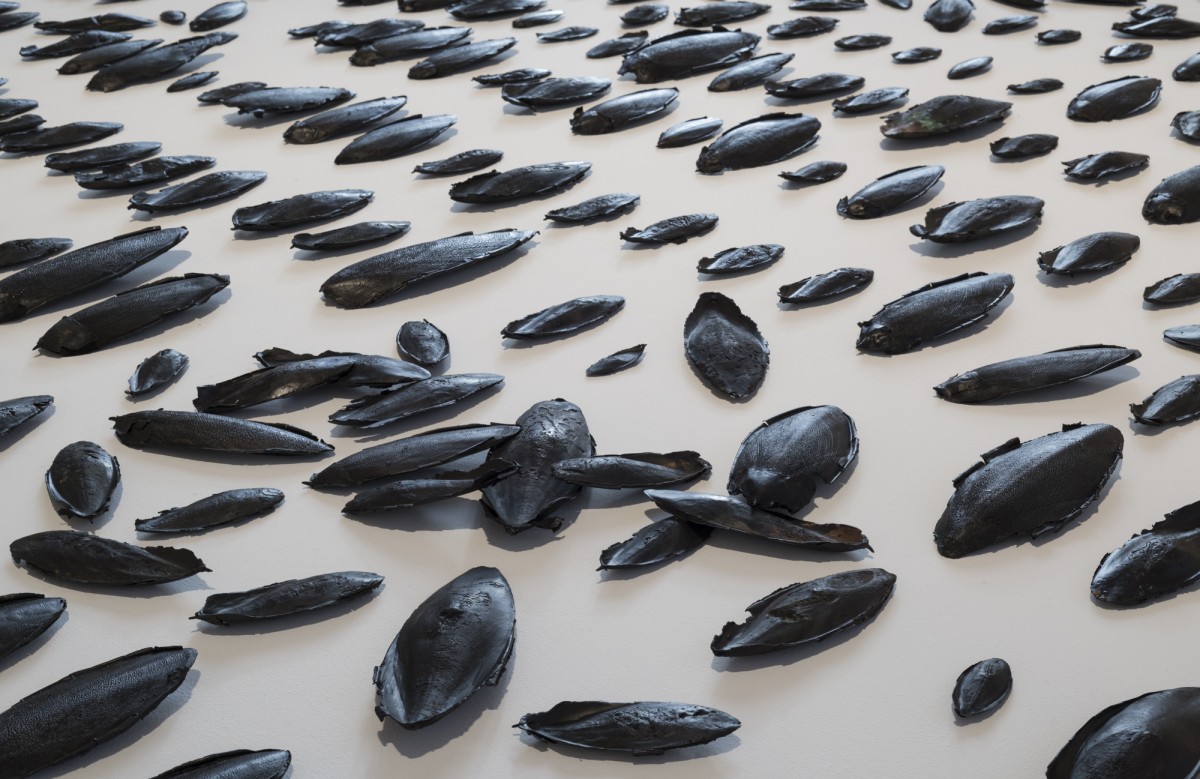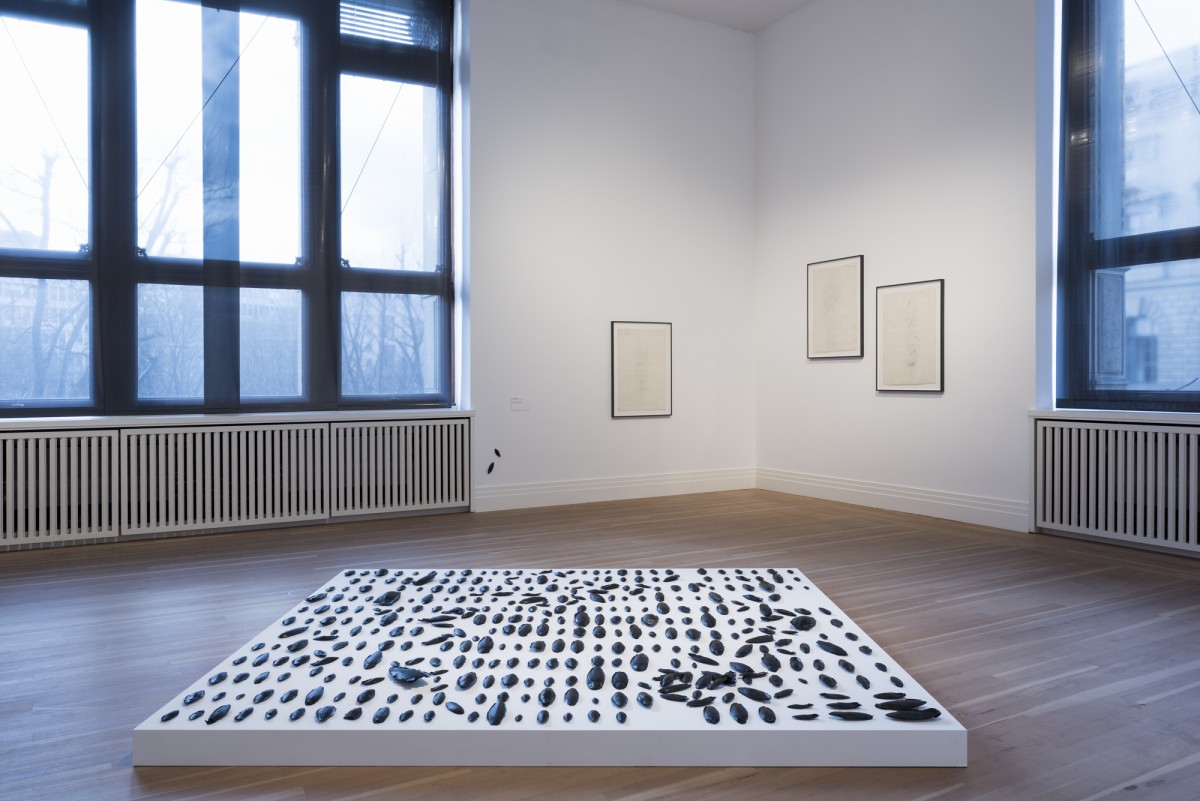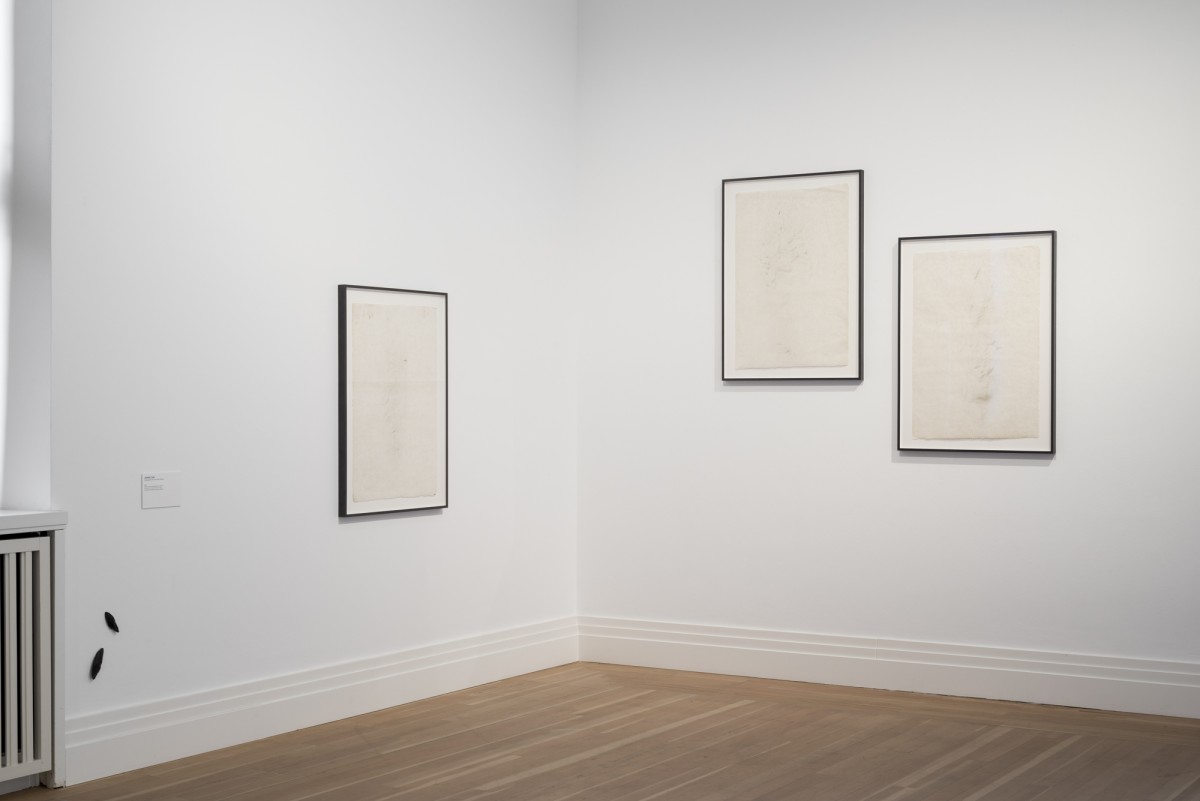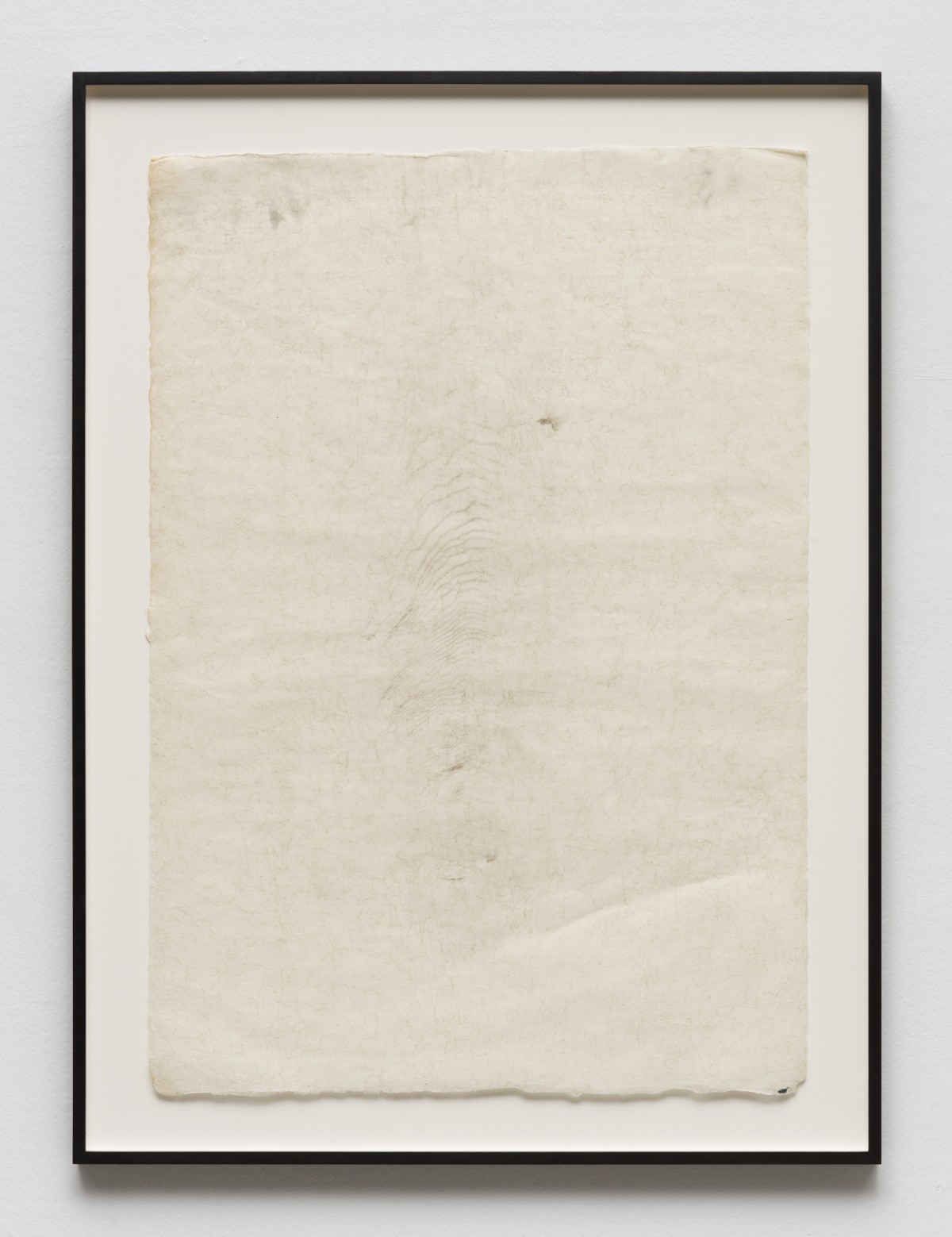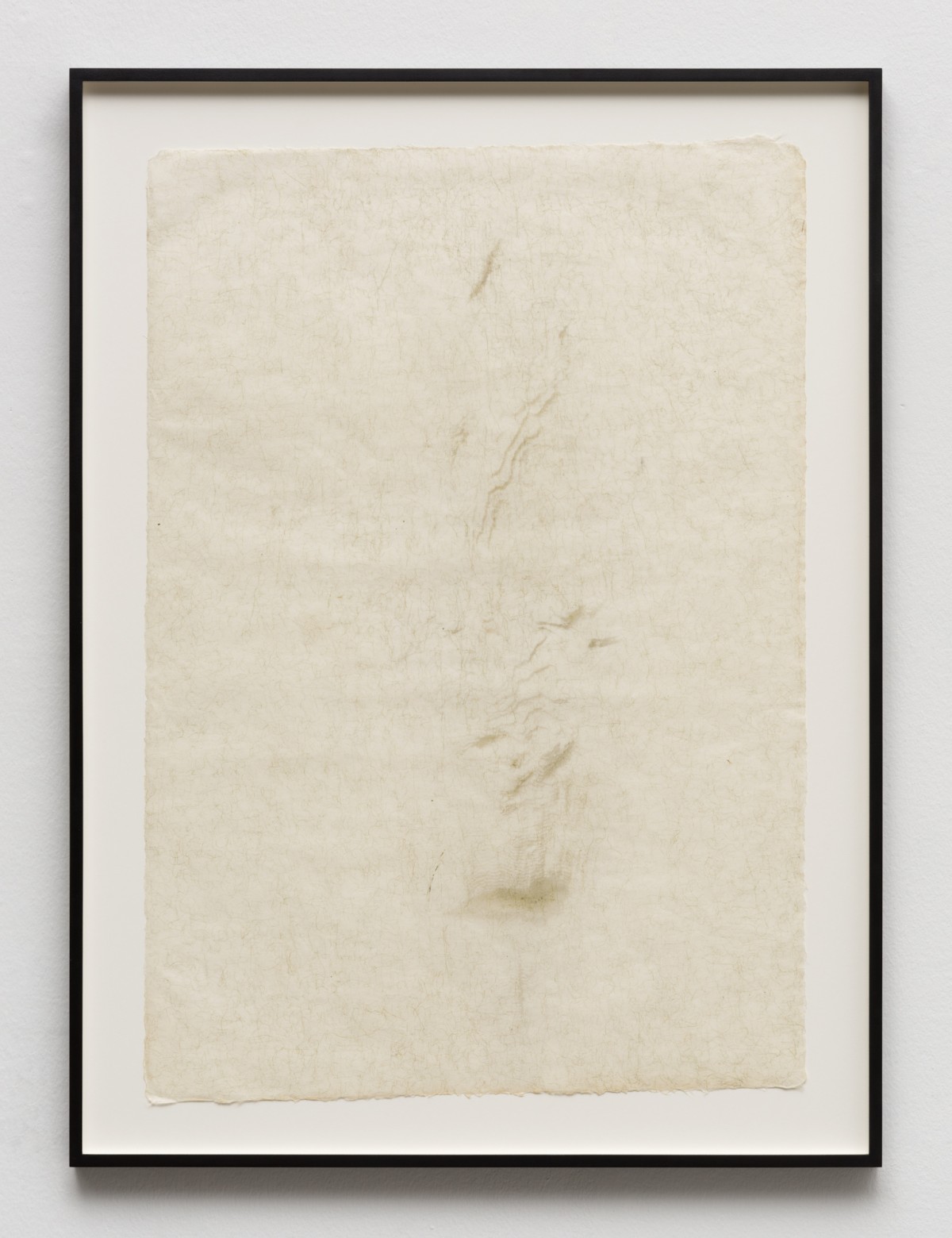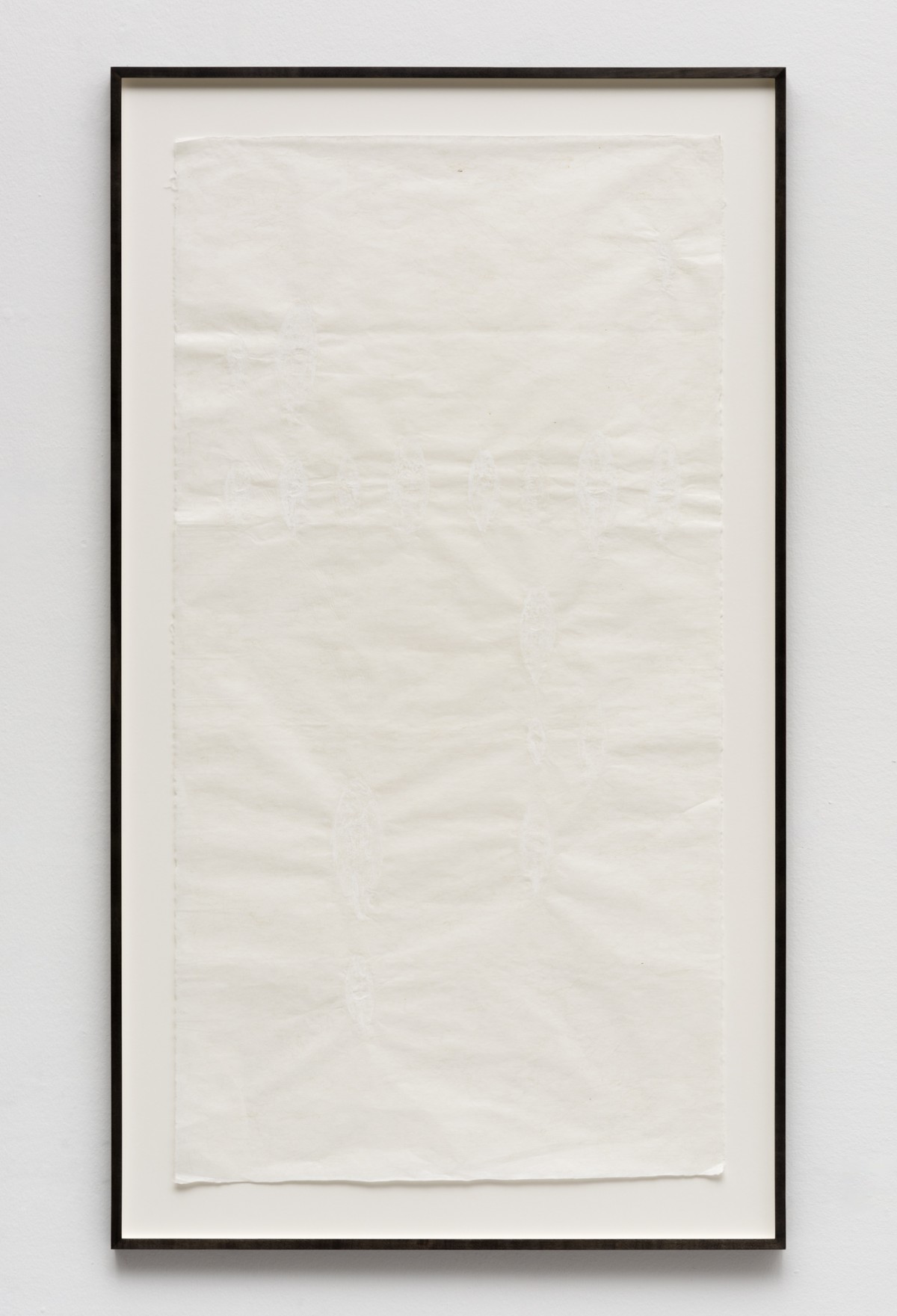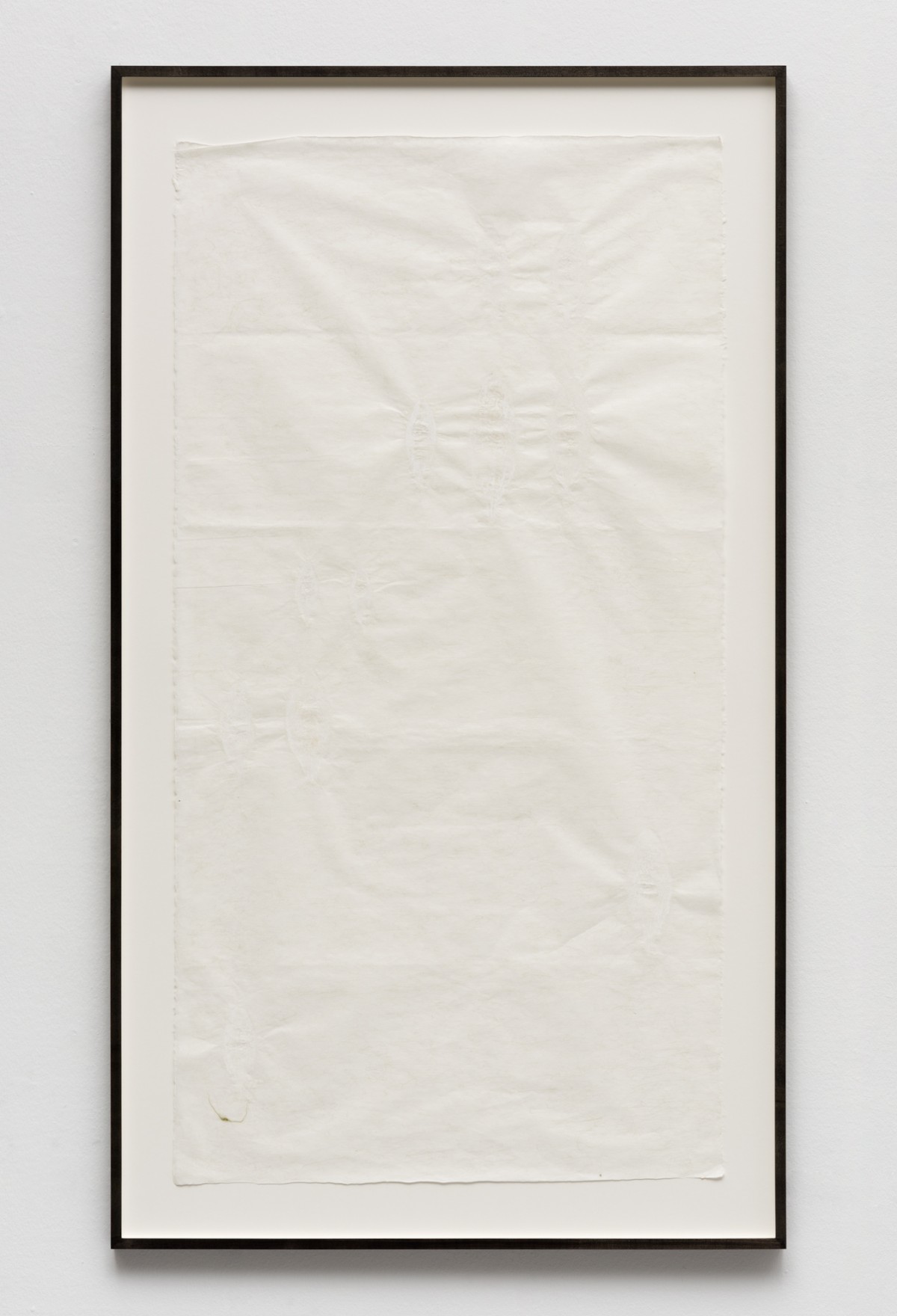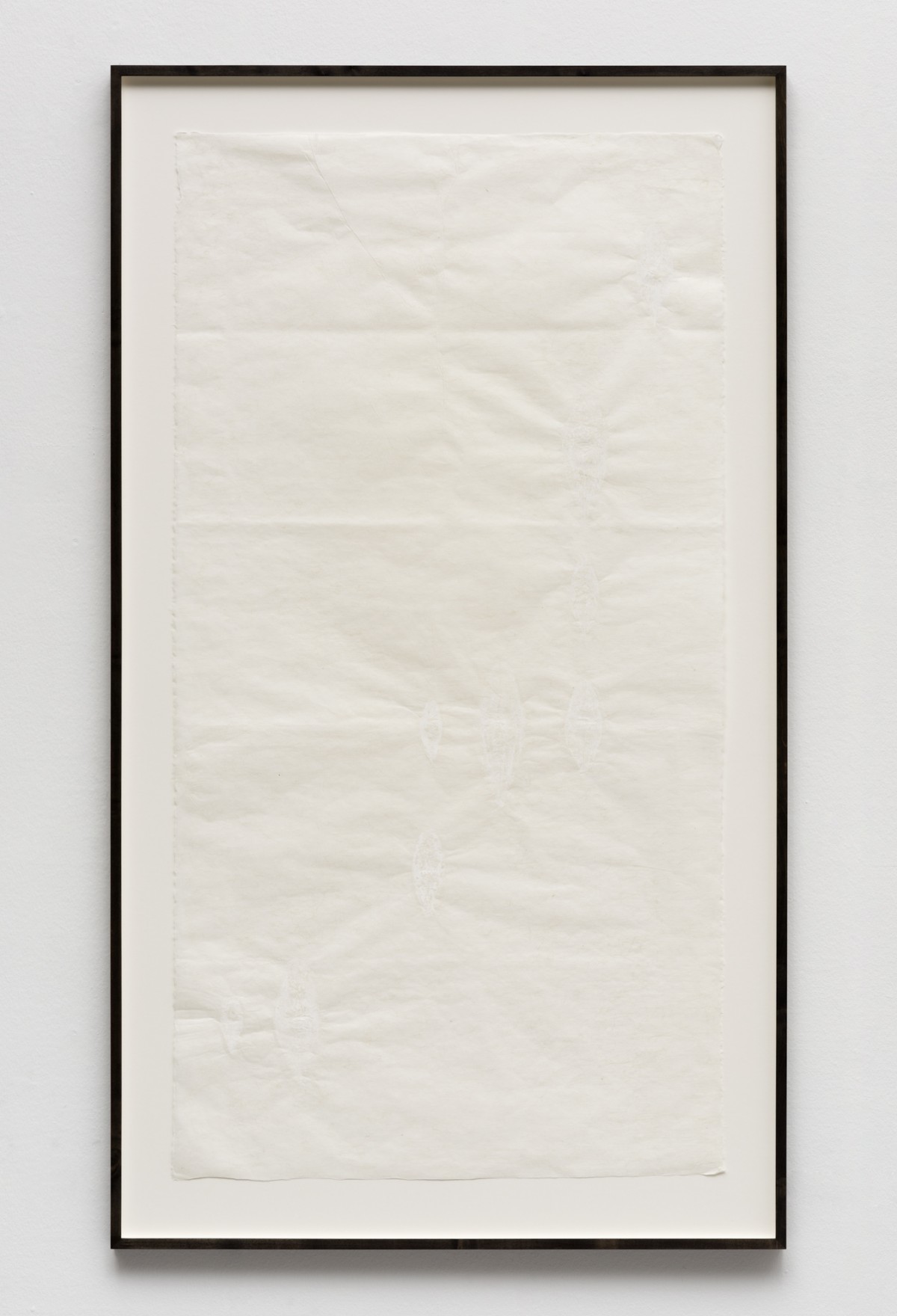EN
Encounter (Future Past Tense), 2023 – ongoing, installation, electroplated cuttlebones, variable dimensions
Topography (Future Past Tense), 2023, print series, inkjet print on Hanji paper with algae, 109.5 × 81 cm
Choreography (Future Past Tense), 2023, print series, printing ink on Hanji paper with algae, 163 × 93 cm
The three-part body of work “Encounter (Future Past Tense)” is based on cuttlebones, the remains of cuttlefish, that Jeewi Lee collected in different places around the world, memorializing her childhood. Reflecting on the delicate yet resilient nature of these small objects—the fragile cuttlebones traveled through ocean currents and surf, yet washed ashore almost unscathed—and the narratives they encapsulate, the artist explores their unique properties and formal qualities. In the image series “Choreography (Future Past Tense),” Lee creates ghostly portrayals of the objects she has collected by taking their imprints with white color on white paper. A second series, “Topography (Future Past Tense),” showcases close-up shots of their layered surfaces, reminiscent of cartographic depictions of landscapes. These delicate images emphasize the complex consistency of these objects and their unique textures which bear traces of their individual journeys. In the installation “Encounter (Future Past Tense),” a multitude of cuttlebones are presented carefully lined up as if in natural history collections. Only a few loose arrangements recall the beach from which they were taken. Lee’s cuttlebones, however, stand out from the specimens found in nature and shimmer in metallic black after being electroplated with copper. The artist has substituted the soft tissue of the cuttlefish, which once protected the lime bodies, with metal coatings, arming them against external influences and preserving them for eternity. By transforming these archaic bones into futuristic, spaceship-like objects, Jeewi Lee ultimately creates a dialogue between the past and the future.
Text: Lydia Korndörfer
